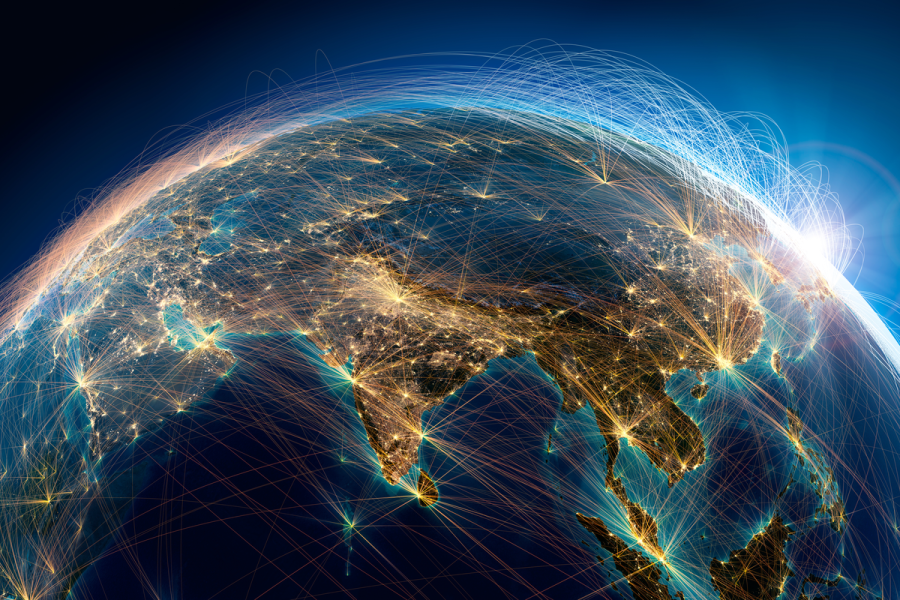Columns
South Asian geopolitics: Present and future
The days ahead are going to be more demanding for South Asian nations.
Binoj Basnyat
South Asia is moving away from its past regional security architecture rapidly. Ongoing geopolitical developments can have a long-standing impact, especially on regional security matters. Foreign ministers of the G7, the world’s prominent democracies and advanced economies, held an in-person meeting from May 2-3 which voiced support for Taiwan and Ukraine. A dedicated discussion was conducted on China’s motives and other global concerns ranging from climate change and human rights issues to gender equality. Officials from Australia, India, South Africa, South Korea and Brunei joined as guests.
Taiwan was included for the first time with observer status in the World Health Assembly which is the decision-making body of the World Health Organisation (WHO). The status will permit Taiwan to be part of the annual meeting to be held from May 24 to June 1. China responded by denouncing the G7 joint testimony, saying it was unpleasant meddling in China’s in-house matters. A significant development for South Asia was the Tibet issue, where the ministers denounced China’s human rights exploitations.
Transferring the operations of Sri Lanka's Hambantota port to the Chinese for 99 years, an escalation of China-India tensions in the western Himalaya and Chinese-funded major infrastructure projects through the Belt and Road Initiative have been the striking points of China’s presence in the smaller states of South Asia. After the 2017 Doklam confrontation, Bhutan has been interrelating about the border issues even if it does not hold any diplomatic relations. The central responsibility of India in the region has created hitches in China-India relations. Governments of South Asian nations are assessing the advantages from the projects by revealing the development efforts to the people even if the political parties are conscious of the disadvantage or the long-term after-effects of Chinese loans, for their central concern is to remain in power through democratic practices.
A meeting between India and the 27 European Union nations ended in an exchange of views on three broad clusters—one, technology and connectivity; two, Covid-19, environment and climate change; three, foreign policy, security and regional issues. This is considered to be a pivotal moment since the first India-EU Summit in 2000. The EU is China’s largest trading partner, but commerce has shrunk due to a series of tit-for-tat sanctions imposed by Beijing and Brussels mainly because of China’s mistreatment of its ethnic Uyghur minority in Xinjiang province.
There has been a lot of chit-chat about the Quadrilateral Security Dialogue (QUAD), comprised of Australia, India, Japan and the US. It has been responding to China’s diplomatic engagements. Much more is happening for a significant and enduring effect. QUAD has been strengthened in response to China’s growing influence in the region and now in South Asia with pandemic diplomacy. QUAD is furthering processes to prioritise trade, investment and the environment as well as augment cyber and maritime security cooperation. The United Kingdom and France have also been part of the military engagement with QUAD Plus nations and have had several naval exercises. After several skirmishes in the Ladakh region, India has unearthed a mutual basis with Australia, Japan and the US to dissuade extended Chinese political advance. Therefore, a focus on the militarization of the Himalaya alone will not suffice.
The present is filled with Covid-19 challenges, but the days ahead are going to be more demanding for South Asian nations, and a question may be raised about their foreign policy. US concerns are about Chinese loans to South Asian nations that are influencing the regional security architecture. Washington will be persuaded to relieve and ease the challenges that the countries will meet in the established finance order for development. US interests in the Indo-Pacific Region are twofold—South Asian nations reliance on China for development efforts, and India’s standing in the region with their domestic politics and internal conflict to shape the South Asian regional security architecture.
Nepal’s foreign policy was adopted in a different regional security environment of South Asia when India got its independence and nationalism was at the core, Tibet was annexed by China and Mao prevailed, World War II ended and Europe was the centre of gravity. The global body the United Nations and global financial bodies were formed. Nepal should be able to receive assistance on the basis of grant fearing a debt trap, though the country in some instances is considering its dependency on India. The Oli-led government with severe criticism assured unmatched development. Nepal counts on foreign aid so it is a challenge for it to reinforce the customary dependence on development aid and the slow progress in non-Chinese foreign direct investment. With the changing strategic dynamics, will the foreign policies of Nepal and other South Asian nations remain the same?




 13.12°C Kathmandu
13.12°C Kathmandu













%20(1).jpg&w=300&height=200)

